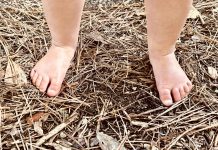 Being a teacher and a mom definitely has its benefits.
Being a teacher and a mom definitely has its benefits.
My favorite thing students ask me is, “Ms. Woodard, when are we going to actually use this in the real world?” (Which is a very valid question.) When we are given a purpose to the information we are learning, it becomes more applicable. So, here are some more academic terms I use everyday with my son.
He is currently in first grade, but it is never too early to talk about mathematical terms. When my son opens up a pack of gummies, I tell him to count how many we have. Then, I ask him for two, and he removes them so I can have them. Next, I ask him how many he has left. I usually end this exercise with “look, you are subtracting/taking away.”
Using those terms will help our children with background knowledge in the future when they are introduced to those concepts in school.
Sometimes, if I am hungry, I will even have him split the gummies in half or tell him that for every one he gets, I also get one so it can be even. Then, I watch him give himself one and me one. At the end of that decision I will ask him how many we each got, and if there is an extra then we have an odd amount. If I want to throw in the division term I will usually just add, “look how you divided your gummies between the two of us.”
You can expand on this by talking about repeated addition and how that connects to multiplication. Like I mentioned before, my child is in first grade and hasn’t been introduced to multiplication, but, as parents, if we can build some kind of background knowledge (introducing terms or forming connections), our children will be better prepared for when they are taught a certain skill in school.
Another concept that kids love to notice would be environmental print.
I remember my son noticing Chick-Fil-A and McDonald’s and reading his environment. We can definitely use this to our advantage to have our kids expand their thinking even more. Beginning and end sounds are very important, especially when students are identifying sounds, so always start there.
I have even created books using environmental print with my child where there is a sentence stem, like “I like ____” or “I go to _____.” The blank can be any restaurant, and you just have your child cut out the logo or restaurant sign and put it in the blank. Repetition is important, and putting a picture there puts less stress on the reading aspect. (Once they get more comfortable I would switch the picture of the sign to the actual word.)
We are constantly making rhyming songs at my house.
These can be about anything, but recently they’ve been about our pets. We have a dog, and his name is Drake. So many things rhyme with Drake, so the song can go on and on. Say a line to your child like, “His name is Drake,” and have them find a saying that ends with a rhyme from the previous ending. My son will usually say “And he eats cake,” and when he says that we usually start laughing. This is a fun way to practice rhyming and to connect with your child.
We are always having conversations with our kiddos, and sometimes we don’t think about the learning opportunities there are with the everyday things we do. The next time you and your child have a conversation, think about the opportunities that were missed, have the same conversation the next day, and insert that lesson, then.











